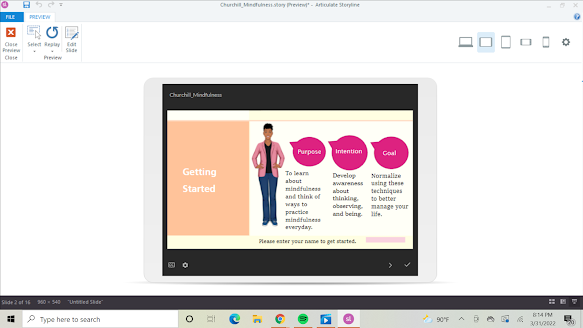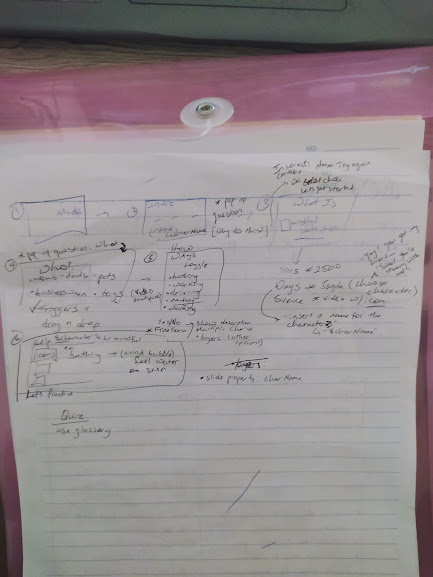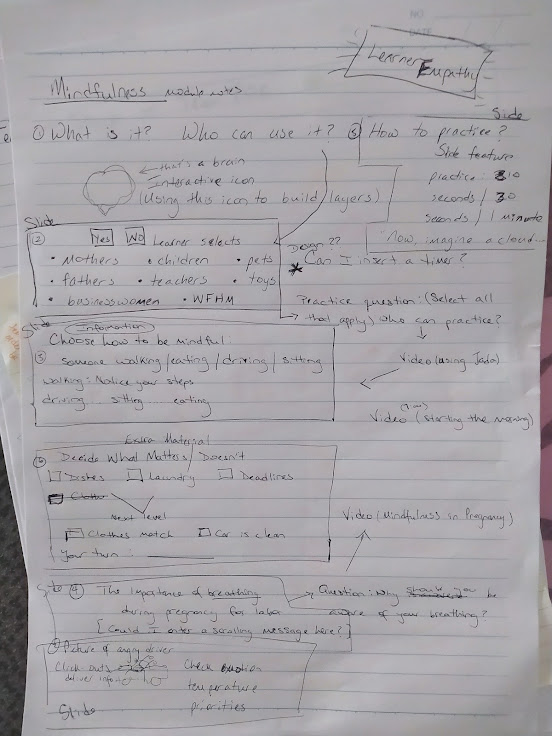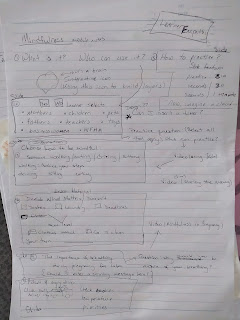Course wrap-up
Well, this is it. And what a ride! What did I learn about being an instructional designer? First, is the role of creativity. In the creative problem-solving process, of the three stages -- problem preparation, idea generation, and idea evaluation -- the most difficult will present itself in the idea generation stage (Herring et al, 2009). No wonder here. Generating creativity calls to mind a blank slate that must be filled, which produces all sorts of anxiety for me because I don't feel like I'm all that creative. That's why "sketching" my design project was so helpful for me. I took to drawing out as much detail as I could -- slides, pop-up questions, and ideas for interactivity. The "thinking sketch" (van der Lugt, 2005) helped me see my ideas in the big story and places for improvement. I didn't, unfortunately, stick to the design I'd put on paper. Once I started building, I'd get a new idea or see a neat interactivity function that I...



